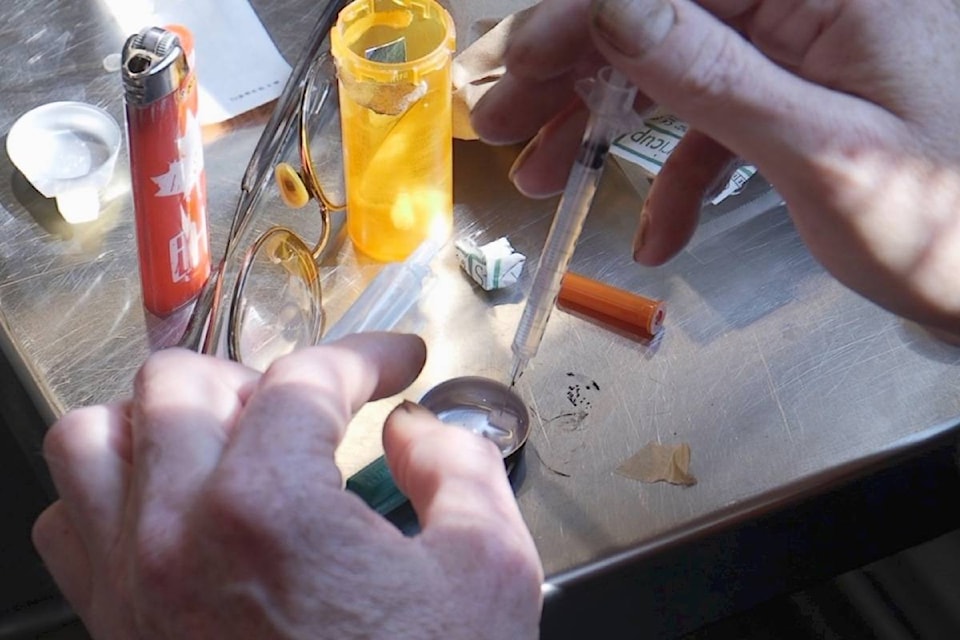After a public health emergency was issued late last year, an Island Health medical health officer says organizations and the province now need to look at more routine health services.
Paul Hasselback, a medical health officer with Vancouver Island Health Authority, said when the opioid crisis first came to light, health officials and the public didn’t know enough when starting out. Hasselback said he’s still not sure what a longer-term solution would look like or how it would be facilitated.
“How do we facilitate this so that not just big cities benefit from it?” Hasselback said. “And yes, maybe that means some sort of service in Parksville Qualicum Beach. We could be looking at more remote sites that are much smaller, but we also need to think about how do we provide the service?”
RELATED: Parksville passes on safe-injection site
RELATED: ODs in Parksville Qualicum Beach high for rural area
The City of Parksville has experienced an increase in drug use and transient/homeless encampments, according to a report from chief administrative officer Debbie Comis. Her report included an option to request Island Health provide a needle sweep and disposal service and for the mayor to write to the health authority to request funding for an overdose prevention site within the city.
Parksville city council instead voted to continue to monitor the transient and drug use situation in the municipality for the next six months.
In the area comprising School District 69 (Qualicum), there were 13 fatalities suspected to be due to opioid overdoses in an 18-month period from Jan. 1, 2016 to June 30, 2017.
Hasselback said of the nine overdose prevention sites currently located on the Island, eight have served 42,000 individuals since the first location opened in December, 2016.
The ninth location opened in Duncan on Sept. 12.
RELATED: Long awaited overdose prevention site opens in Duncan
Hasselback said each site has been fairly well-used, but there is variability between sites. In Nanaimo, he said, they’re averaging about 225 visits per week in the last month and Port Alberni is in the 150-200 range.
In Courtenay and Campbell River, Hasselback said, they are in the 10-20 visits per week range, but the two locations have shorter hours than Nanaimo and Port Alberni.
Asked whether or not the overdose prevention sites are helping to save lives, Hasselback said about one in 100 individuals that come to the sites has an overdose that requires intervention. He said that number is pretty consistent for all the sites.
“One could say that’s the number of lives we save… I usually put it more that one per cent has an overdose that needs to be intervened upon,” Hasselback said.
He added that overdose prevention sites are an important function for people who are currently using, and it’s part of the cycle of the dependency, or addiction, disorder.
“I think there’s a misconception out there that people who are currently using, it’s a choice the next time they’re going to take a drug — it really isn’t,” Hasselback said. “That’s why it’s called an addiction or dependency disorder. We need to meet them where they currently are, not where we would like them to be.
“In order for us to provide support treatment, we need to begin someplace and we need to have a way of developing a trusting relationship. We need to be able to have a location where people can come where they’re not being judged.”
He said the sites aren’t just about preventing overdoses, but are also places people can engage and establish relationships with care providers where they have enough trust to then begin looking at other intervention services the users may benefit from.
“They have really good success stories about how they have taken an individual from needing a sort of protection of the service to a situation where they’re under appropriate treatment,” said Hasselback, adding they do have a bit of information of the use of prescriptions.
Hasselback did admit that probably not enough information on the subject has been collected, but he said there should be better information collected in the near future as VIHA sees how much success and utilization of treatment is actually in place.
“I think this is all part of the response and showing us that we’re needing to do this and that it’s making a difference.”
